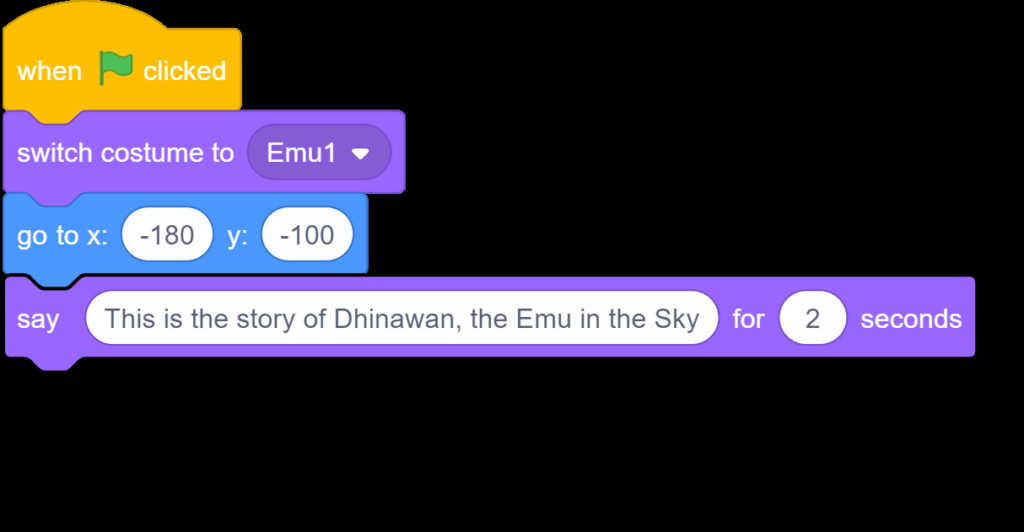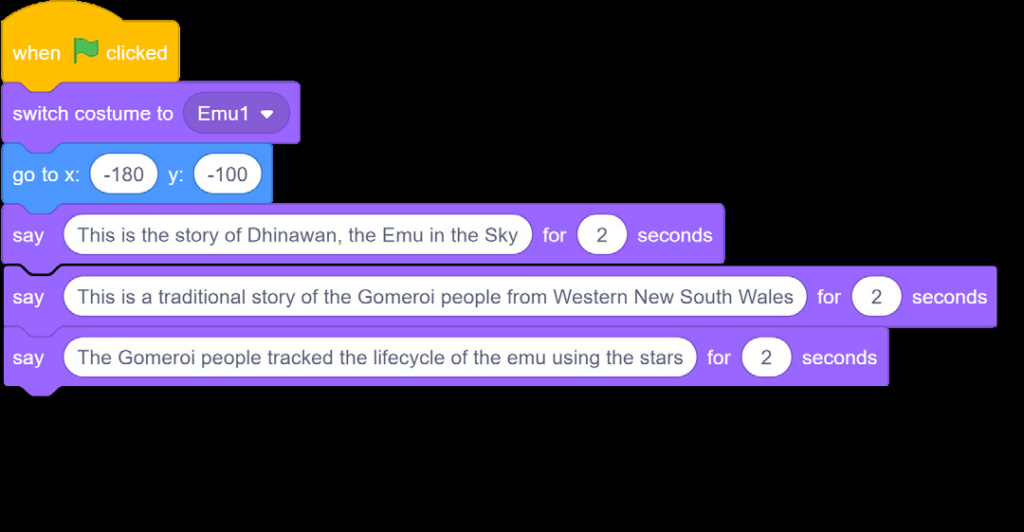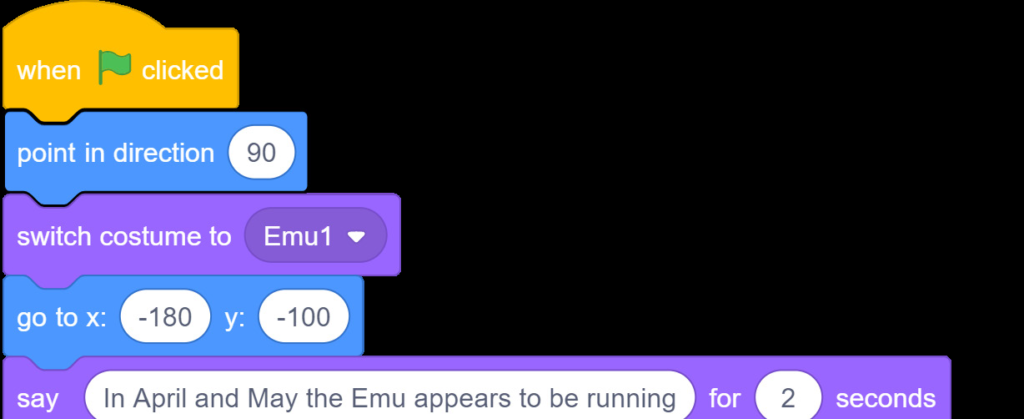The Dhinawan
Let’s code the Dhinawan (Emu) to move across the stage.
- Open the Starter Code here – bit.ly/mhemu
- Add this code to the Dhinawan sprite so that it starts in the middle-left of the stage.

- Add the text for your Dhinawan to start the story.
- Are 2 seconds enough to read this line in your story?

- Add this code
- This part lets us know who owns the story we are telling.

Oral communication is valued greatly and used widely within Aboriginal communities to understand the past, present and future.
There is a lot of typing to tell this story in written form. If you
prefer, you can record your own telling of the story. Use the record feature on the sounds tab.
Replace each of your ‘say’ blocks with a ‘sound’ block once you’ve recorded each section of the story.


- Add code so that your Dhinawan moves until it reaches the top-centre of the stage.
- Test your code by clicking the green flag.


In March you will begin to see the female Dhinawan (which means ‘Emu’ in the Gamilaraay language) making her way into the Southern night sky. Over the next few months, the female Dhinawan will change telling us about what is happening on Country. During April and May, the female Dhinawan will appear to be running, which tells us that it is Emu mating season, and that soon it will be time to collect the eggs.
- Add code so that your Dhinawan moves until it reaches the top-centre of the stage.
- Test your code by clicking the green flag.

- Add code to change the costume of the Dhinawan.
- We also need to add more text to explain the next phase.


During June and July, the female Dhinawan will have laid the eggs, it is then the male Dhinawan’s responsibility to sit on the eggs.
- Add code to change the costume on your Dhinawan for the next stage.


Around mid-to-late August the eggs hatch, and the Dhinawan shape in the sky now appears to be two egg shapes. At this time the male Dhinawan takes chicks out and teaches them about the land and where to find appropriate food, water and shelter. During this time on earth, we stop collecting the Dhinawan eggs.
- Add the last section of code to animate the final phase of the Dhinawan in the Sky.
- The Dhinawan has to face down, instead of up, so we have changed the direction by 180 degrees.

- Add the direction block at the beginning as well, to reset our code each time.
- Test your code by clicking the green flag.


During September-October, nearing the end of spring, we will start to see Dhinawan disappear back to the South West. We learn from this cycle: the cycle of the Dhinawan’s mating season and the roles that we play on earth in relation to the Dhinawan on the land.
